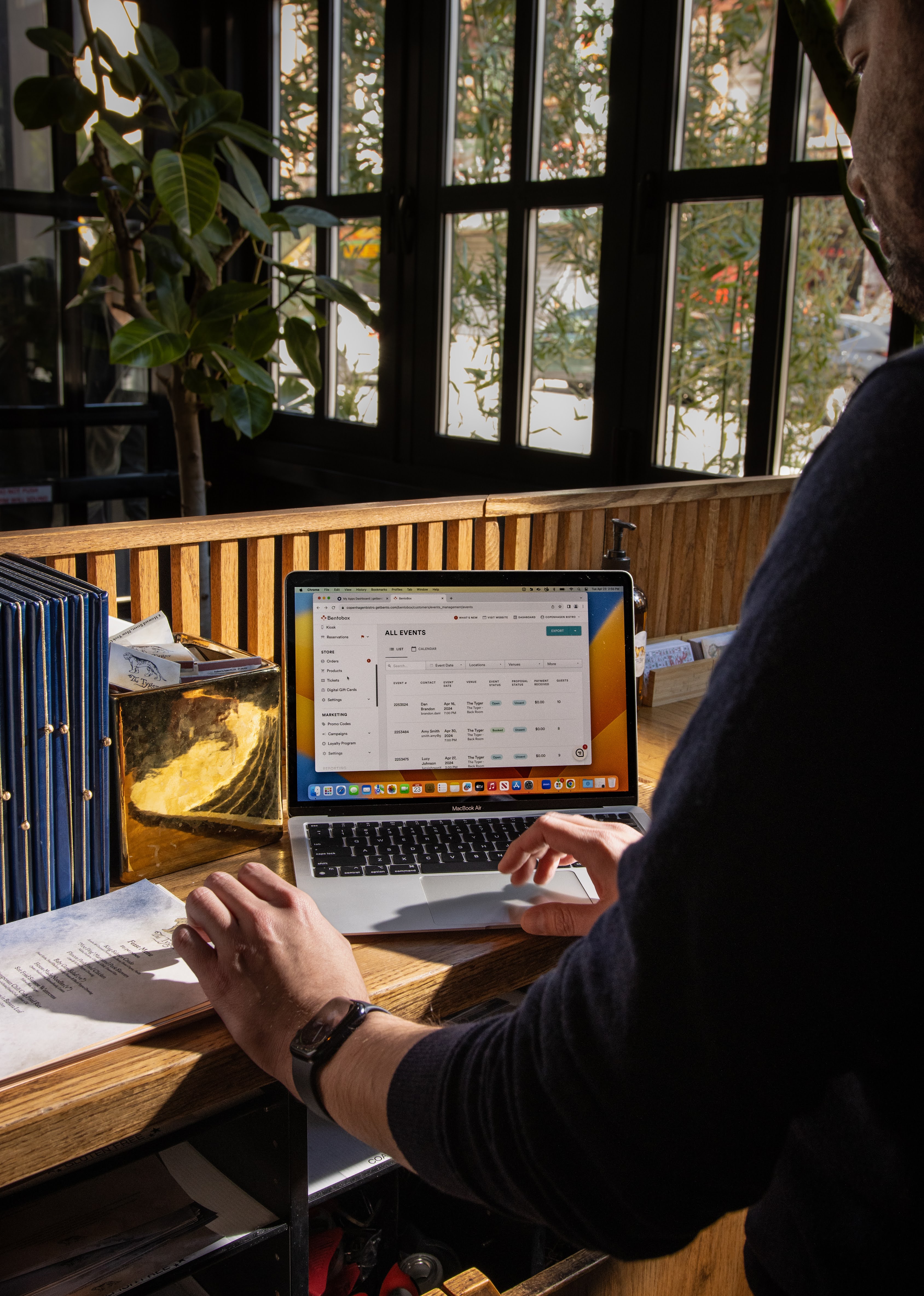New Openings
How to Market a New Restaurant Opening
From the website and social media to building buzz with a PR agency, here's how you can set yourself up for success.
So, you’re opening a new restaurant. There’s excitement, some panic, and tons of anticipation. You have your business plan in place. Permits are secured. The menu is built out and staff is hired. There’s only one thing left: putting together a promotional plan that will bring diners through your doors and drive online orders.
A well-constructed marketing strategy is critical to a successful opening day. Here’s a step-by-step guide to preparing one.
1. Optimize your website
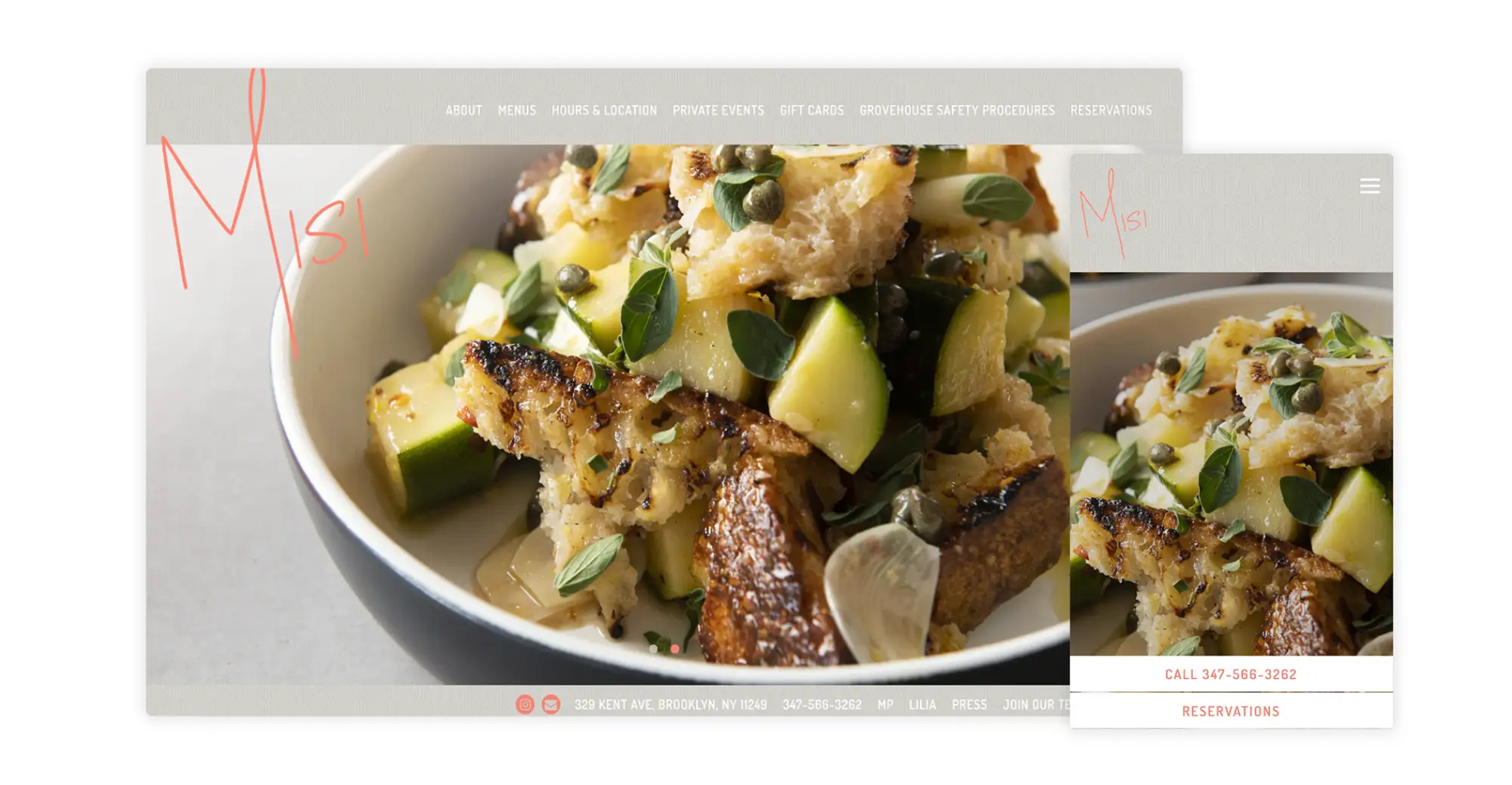
A restaurant’s website is its digital storefront. It’s where diners go to find location information, view menus, make reservations, or inquire about private events. More importantly, restaurant websites are revenue drivers. Whether a restaurant sells merchandise, event tickets, catering or delivery, the website is a go-to resource for diners.
Even if the website isn’t a priority during the early stages of opening a restaurant (seeking capital, signing a lease, etc.), it's vital for when you've secured a location, built out your team, and started drafting your marketing plan. It’s important for a new restaurant to have a website that reflects its brand and converts visitors into actual paying customers.
Below are some important aspects of a restaurant website:
The website is mobile-friendly and responsive to all devices
Crucial information like contact info, hours and location are front and center
Easy-to-update menus that are text-based (not PDFs or images)
Contact forms for catering and private event inquiries
Reservation and online ordering buttons are visible on every page
Gift cards, merchandise, event tickets, or catering can be purchased directly on the website
The website is simple to navigate, manage and update
Beautiful, relevant photography that is optimized for the web
The platform is certified to WCAG 2.1 AA accessibility standards
Read more: 10 Essential Elements + Design Tips for Restaurant Websites
Checking off all of these boxes can be overwhelming for new restaurant owners who are focused on just opening their doors. That’s why it’s best to rely on experts. A restaurant website design company, like BentoBox, is a trusted and true hospitality partner that uses industry best practices and cutting-edge technology to set a new restaurant up for success.
Read more: How to Choose a Restaurant Website Design Company
2. Collect email subscribers
Beyond being a digital storefront, your website is also a powerful marketing tool. When you’re trying to get the word out about your upcoming opening, building an audience is an important step and your website is a good tool for gathering email subscribers.
Even before you’re officially open, set up a “splash page” — a single page website where you can capture email addresses, display your address, and showcase social media accounts — like New York City restaurant Greywind does below.

3. Implement automated marketing
Once you’ve captured a list of email addresses, it’s time to send out communications. Because subscribers are already interested in your restaurant, they’re a go-to audience that you should turn to first to engage. Send a marketing email highlighting the grand opening, including how on-premise dining will operate, opening-day menus,and hours of operation.
If you plan on offering takeout in your first days, it’s equally important to link to online ordering. To drive more online orders, incentivize diners with opening-day promotions and ensure that each email has a clear CTA that drives them to the website.
As business ramps up, automated marketing solutions can streamline operations. Automated Marketing Campaigns is a free tool available to BentoBox customers that sends marketing emails to previous guests to drive reorders.
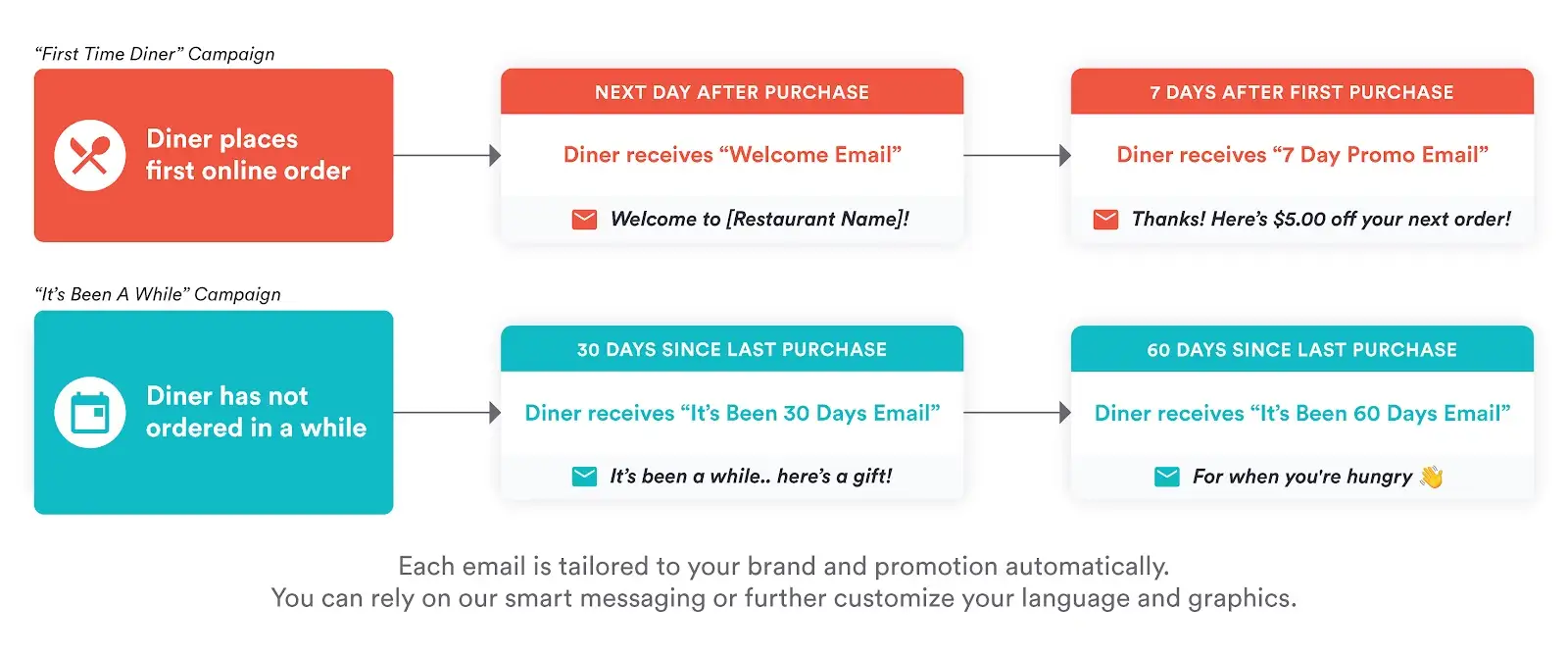
It’s also helpful to consider implementing a customer loyalty program. Having these programs in place at the onset of a restaurant’s opening helps foster diner loyalty, builds brand affinity, and drives word-of-mouth marketing. Loyalty Programs incentivize customers to reach milestones and receive promo codes or free items — all with the goal of driving more repeat orders.
Read more: How to Build a Successful Restaurant Loyalty Program
4. Create a Google Business Profile
Google is an important part of a diner’s lifecycle. For newly opened or soon-to-be-opened restaurants, creating a Google Business Profile is a powerful marketing tool that provides key information to diners. When a potential diner uses Google to search for a restaurant, your Business Profile shows the restaurant's address, phone number, website, hours of operation, and more. You can also add links to your reservations page, online ordering, and merchandise store.
Read more: What The End of Order with Google Means for Restaurants
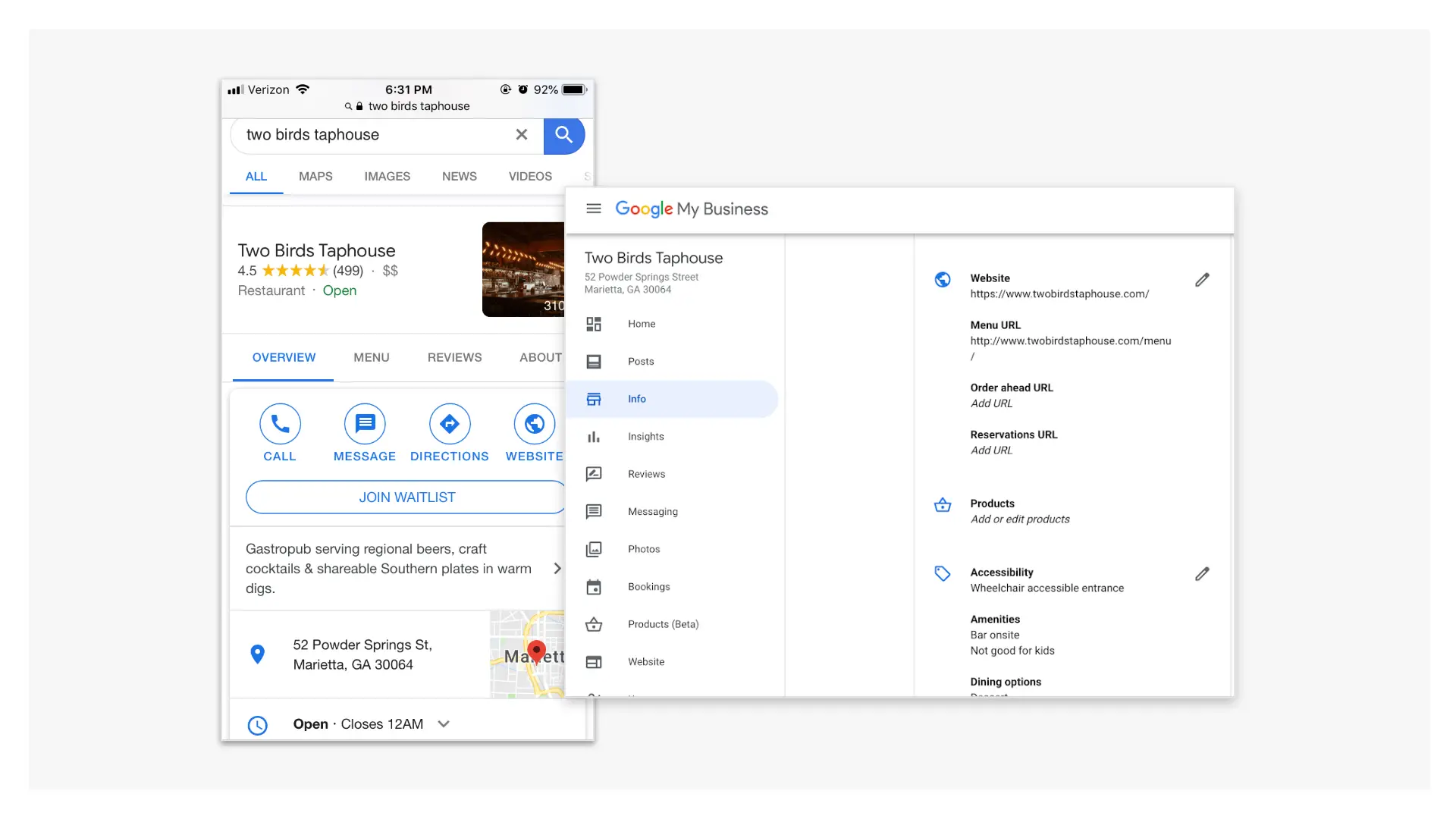
Updating information across your restaurant’s channels is a time-consuming process. Fortunately, there are solutions to this problem. With Google Sync, updating core information across various platforms is easier than ever.
When you update information such as menus, hours of operation, addresses, and phone numbers, Google Sync automatically updates this information across Google Search, Google Maps, and Facebook — saving you time and ensuring cohesive information across all channels.
5. Build brand awareness with social media
Social media is essential to building a brand. Managing a handle on Facebook, Instagram, and various other channels allows new restaurants to establish themselves in the community, increase visibility, and build an audience.
Madeline Grenadier, Founder and CEO of marketing agency Digital Society LLC, attests, “If you would like to build your audience and get the word out about your restaurant, advertising and engaging on social media is the best way to go about it. Even if you can only invest a small budget or amount of time commenting or liking posts in your community, you will see your followers grow.”
On where to start, Grenadier adds, “I highly recommend that a new restaurant establish a presence on every platform — Facebook, Instagram, Twitter, TikTok, LinkedIn, Google Business Profile, and all review platforms. I find it extremely productive to have content everywhere because there are different audiences and demographics on each one. For example, our clients have had success posting about business lunches, lunch specials, and events for companies on LinkedIn.”
A well-constructed restaurant marketing strategy will include the plan for handling social media, Grenadier adds. “It’s important to have a social media strategy in place ahead of time so that you can have a clear vision as to how you want to grow and scale your restaurant. You have to identify your customers and consider what they want to see in order to appeal to them. With any business, there are a lot of ideas that people want to execute or discuss and never complete, so having a plan of attack with launch dates will hold everyone accountable and ensure your social media marketing does remain a top priority.”
When it comes to content itself, restaurants should promote their brand, establish a voice and use photography to preview tantalizing menu items. Here are some content suggestions for new restaurants to feature on their channels:
Spotlight the dining experience. Have an awesome patio? Beautiful sidewalk seating? What’s the bar look like? Highlight the experience diners will enjoy in your new space.
Include menu item spotlights. Post opening day menu items using beautiful photos and descriptions of food and drinks. Have a top-notch wine cellar? Be sure to take followers on a visual journey of their dining experience to the point where they can almost taste it.
Feature back and front of house staff. Celebrate staff with images of the team in the act of cooking, plating a dish or shaking a drink. This builds an emotional connection with diners, increasing engagement and loyalty. Have an award-winning chef? Use their story and accomplishments to help build buzz and give your restaurant a “face.”
Partner with influencers. Grenadier suggests that every new restaurant should partner with social media influencers. “Influencers have a huge impact on business growth and can really help spread the word about your restaurant and everything that you have to offer.”
Add the human element. “Don’t forget to establish a human connection and communicate with your customers and audience,” says Grenadier. “It’s important to prioritize efforts to ensure a positive customer experience such as replying to comments and messages and establishing a relationship with followers so that they will want to support the restaurant.
Once you’ve started creating social media content, add links to your website that drive to your handles, making it easy for users to engage more deeply with your brand. It’s a simple way to earn more followers and convert them into loyal customers.
Recommended Resources:
6. Work with a PR agency to build hype
Every restaurant has a unique story to tell, and a solid public relations strategy will help that story get told. If it's in your budget, working with a PR company goes a long way in generating media buzz and building awareness for your launch.
Haymaker, a PR agency in New York City, says that “working with the right PR team can both help a restaurant reach journalists and shape their story into something that they’re interested in. That means new customers and more sales.”
How a restaurant chooses to tell its story is key. Haymaker believes that a good story is rooted in authenticity. “When telling your story in the press, be sure to stay true to your core values as a restaurant so that your public image matches the experience diners get when they come in.”
Read more: 12 Top PR Agencies for Your Restaurant
7. Consider direct mail, TV, and radio
While modern marketing channels like social media are key to generating buzz in today’s world, restaurants can also drive an impact with more traditional methods.
Popular traditional marketing strategy involves TV, radio, and podcasts. Running ads on TV can be extremely expensive for a small business, but radio and podcast advertisements are more budget-friendly.
Consider partnering with a local radio station to advertise your new opening or collaborate with a popular local podcast to do the same. There is no right or wrong way to build awareness, so long as it’s affordable and executed with the goal of acquiring new diners.
8. Prep for Opening Day!
When opening day arrives, your restaurant’s marketing efforts will pay off in a full restaurant, strong online sales, and happy guests. However, the process of marketing a restaurant doesn’t end when the doors swing open.
Always explore new ways to connect with your audience and reach new customers. Continue to build brand awareness across social media and drive diner engagement through marketing emails, customer loyalty programs, and your website to grow the business.
Interested in getting started with a restaurant website or online ordering? Get in touch with a BentoBox specialist today.

BentoBox Marketing & Commerce Platform
Deliver Smarter Hospitality
Want to stand out online, bring in more money, engage your diners, and streamline operations?
Recommended
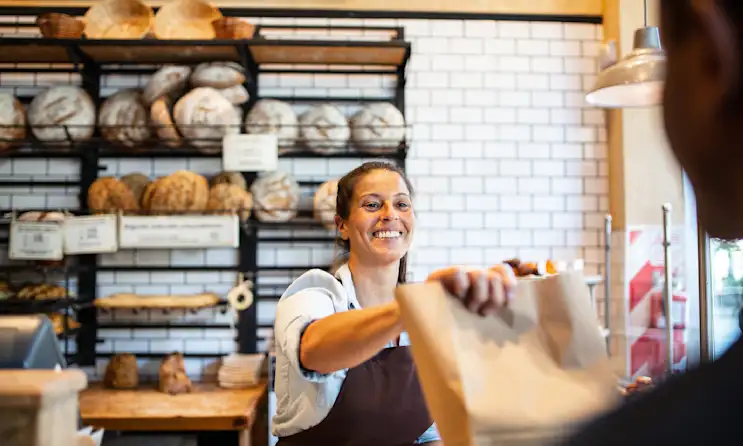
New Openings
How to Open a Bakery: The 6 Key Steps
June 20, 2023
A step-by-step guide to planning, financing, designing, staffing, and marketing a new bakery.
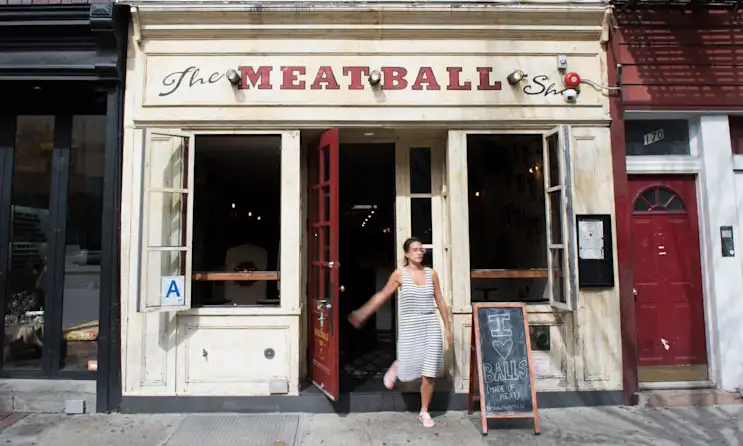
New Openings
How To Expand Into A Multi-Unit Concept
June 30, 2017
Advice from The Meatball Shop, Tacolicious and Next Door on growing your restaurant business

New Openings
How to Find Restaurant Investors
June 14, 2017
Here are some tips and tricks from pros who’ve done it themselves.
